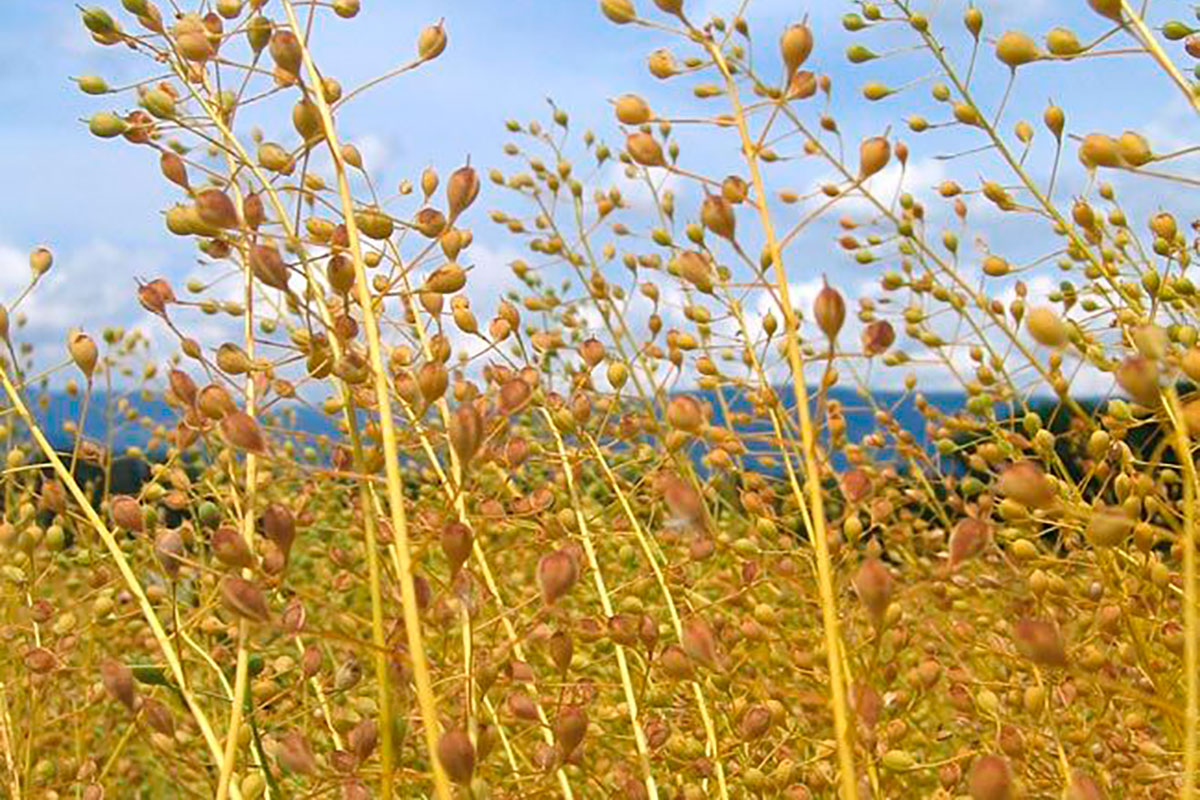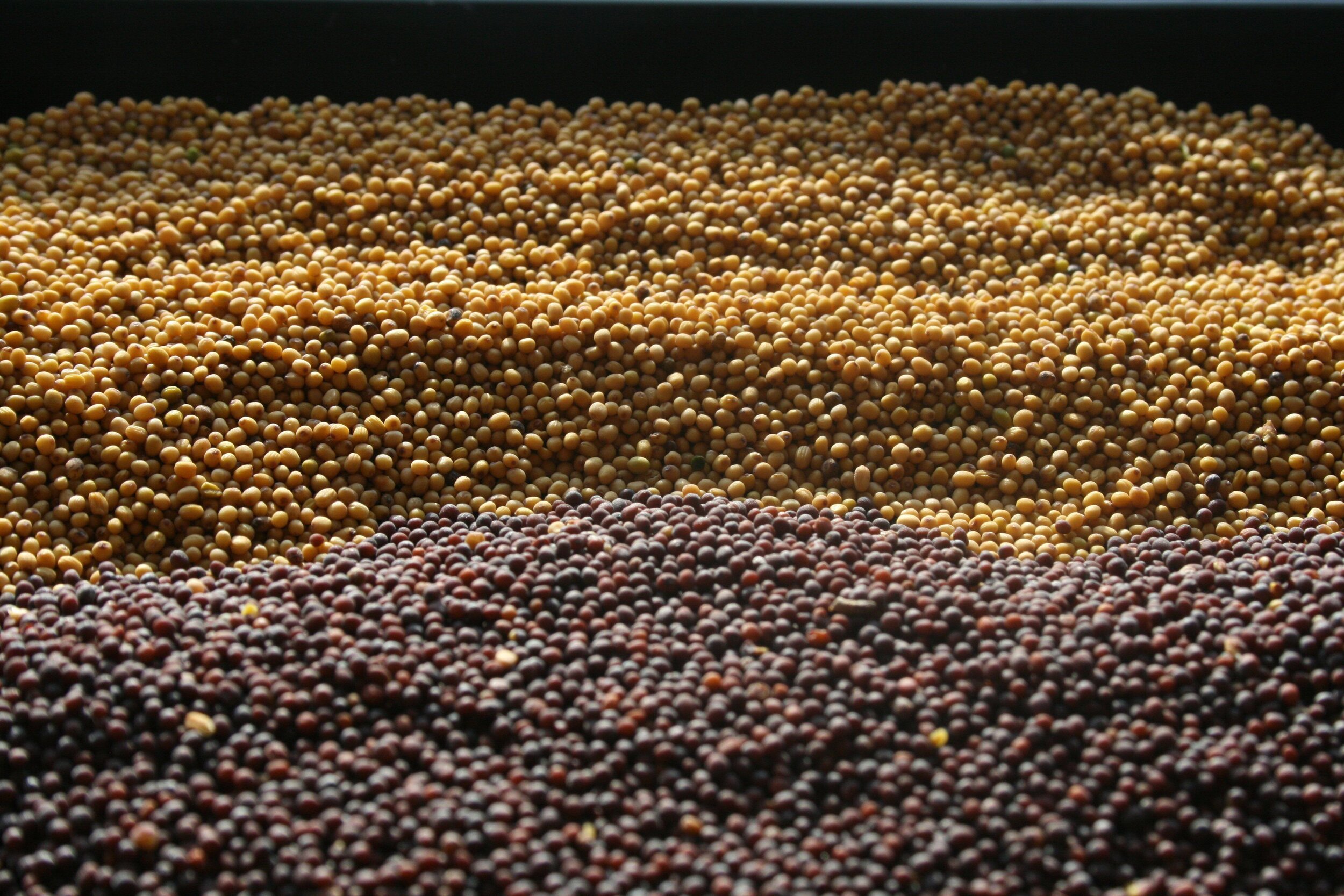PROJECTS & principal investigators
Greenhouse Gas (GHG) program for diverse crops
Dr. Kate Congreves (USask)
Integrated approaches for genetic improvement of flax
Dr. Bunyamin Tar’an (USask) and Dr. Frank You (AAFC-Ottawa)
Camelina crop and germplasm development-harnessing for climate resiliency
Dr. Christina Eynck (AAFC-Saskatoon) and Deb Puttick (Smart Earth Camelina)
Climate smart condiment mustards for crop productivity and resilience
Dr. Bifang Cheng (AAFC-Saskatoon) and Dr. Howard Love (Mustard 21)
Breeding and experimental hybrid screening of confection sunflowers
Katherine Stanley (Manitoba Crop Alliance)
Impact assessment study
Dr. Richard Gray, (USask)
project descriptions
Greenhouse Gas (GHG) Program for Diverse Crops
Dr. Kate Congreves (University of Saskatchewan)
The activity will provide a comprehensive GHG dataset for five diverse field crops (camelina, carinata, flax, mustard, sunflower) with spring wheat as the reference crop in Canada. The methodology is based on field trials over three years with frequent site visits (35-45 times per year) for GHG emission measurements and to test four nitrogen management treatments based on a nitrous oxide emission reduction protocol. N measurements will determine fertilizer recovery into plant components and will allow the development of N2O emission models based on crop species and N management techniques. The activity involves national collaboration (GHG researchers from Saskatchewan and Ontario) for modelling GHG reduction potential at regional and national scales.
Integrated Approaches for genetic improvement of flax
Dr. Bunyamin Tar’an (University of Saskatchewan) and Dr. Frank You (AAFC-Ottawa)
The flax research program at the University of Saskatchewan supports the Canadian flax industry by discovery, examination, and integration of new traits into registered varieties. Trait improvement is a continuous process and this activity proposes to pivot the research program to place an emphasis on traits that enhance sustainability of flax production under climate change. Genomic selection (GS) by applying molecular markers for selection of complex traits in flax will reduce breeding cycle times and costs associated with phenotyping. The main objective is to develop high-yielding flax lines well adapted to the Canadian environments with improved resistance to pasmo disease through accelerated plant growth technique.
Camelina crop and germplasm development-harnessing for climate resiliency
Dr. Christina Eynck (AAFC-Saskatoon) and Deb Puttick (Smart Earth Camelina Corp)
While plant breeding is pivotal to producing new crop cultivars with greater climate adaptive capacity by introducing and creating novel genetic variation, future progress in camelina breeding may prove slow due to an overall low level of genetic diversity in the C. sativa gene pool, an impediment that is particularly true for winter camelina. In order to address this problem, we are working on a project that can make a significant contribution to climate change adaptation on the Canadian Prairies by harnessing increased diversity in camelina at three levels: innovative cropping systems and more sustainable agronomic practices – by developing best management practices for growing a winter camelina cover cash crop; novel breeding approaches for increased genetic diversity and acceleration of genetic advances in camelina cultivar development - by deploying multi-parent crosses, complemented by the development of superior winter camelina cultivars; and state of the art pre-breeding activities for the development of germplasm with novel genetic variation – by utilizing inter-specific crosses to exotic, less adapted genetic resources to enhance available variation to be utilized in both spring and winter camelina breeding.
Climate smart condiment mustards for crop productivity and resilience
Dr. Bifang Cheng (AAFC-Saskatoon) and Dr. Howard Love (Mustard 21)
Canada has been recognized as the world’s largest producer and exporter of condiment mustards including yellow mustard (Sinapis alba), brown and oriental mustard (Brassica juncea). However, there are other countries such as Ukraine, France, and the USA that now compete with Canadian mustard in the global condiment trade. we aim to develop brown and oriental mustard hybrid varieties and yellow mustard composite varieties with herbicide tolerance, high-yielding potential and desirable quality traits for the mustard producers in Canada. The enhanced seed yielding potential and desirable quality traits of the new varieties will increase crop productivity and the profitability of the Canadian mustard value chain for the producers and processors. The herbicide tolerance of the new varieties will enable producers to have more effective weed control in the field, decrease risk of mustard crop damage caused by Group 2 herbicide soil carryover, ensure minimal soil disturbance and increase the sequestration of carbon through continuous crop production. Clubroot resistance and soil salinity tolerance of condiment mustards will also be studied.
Breeding and experimental hybrid screening of confection sunflowers
Katherine Stanley (Manitoba Crop Alliance)
Manitoba Crop Alliance (MCA) manages the only sunflower breeding program in Canada, focused on developing confection sunflower hybrids suitable for growing in Canada’s agronomic environment and meeting the unique market demands of this special crop. Varietal development is an indispensable tool to adapt to and mitigate climate change. This project will incorporate herbicide and disease resistance genes into confection sunflower and identify regionally adapted confection sunflower hybrids with a marketable seed type suitable for growing in a Canadian Prairie climate.
Impact Assessment Study
Dr. Richard Gray (University of Saskatchewan)
This study is required of all clusters previously funded by past AAFC Agri-Science programs (Growing Forward, Growing Forward 2 and/or Canadian Agricultural Partnership programs). The objective of the study is to determine the impacts and outcomes of the Diverse Field Crops Cluster and address its ability to coordinate and build new partnerships, collaborations and research capacity. In addition, the study will report on innovations resulting from the research that have been commercialized or broadly adopted by the sector.









